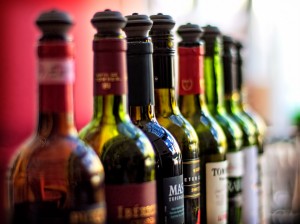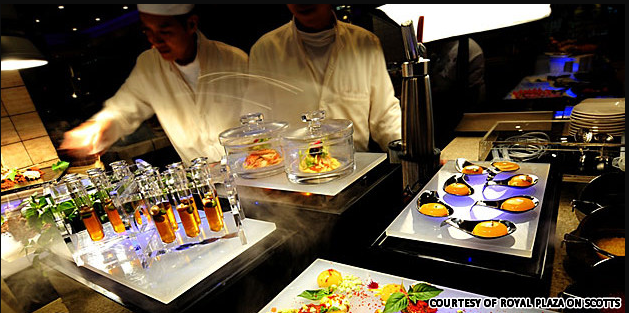Red wine sounds romantic and tastes good, but it can easily get you drunk and seriously harm you, both physically and mentally. However, some researchers found that red wine can help people look younger and reduce the risks of suffering heart diseases. People are excited to hear that, but is it really the case?
Figure 1. Red Wine. (Image by Alex Brown via flickr)
Resveratrol, melatonin and flavonoids are polyphenols found in red wine, which are related to the benefits of red wine. Polyphenols are found in the skin of red grapes, and scientists believe that they are cardio protective. In particular, a polyphenol called resveratrol, which is produced during the fermentation process, reduces bad cholesterol and prevents blood clots. A high level of low-density lipoprotein (‘bad’ cholesterol) builds up in the arteries and blocks the blood flow. With a reduction of bad cholesterol, people will become thinner and healthier. In addition, melatonin delays the oxidative damage and makes people look younger. Flavonoids, compounds that modulate cell signaling, can reduce cardiovascular diseases. They may also be able to reduce the risk of getting neurodegenerative diseases.
Obviously, there are some beneficial compounds in the red wine, and by drinking red wine we can intake a lot of them. However, while there are some benefits, it is still important to be aware of the significant negative effects of alcohol. Alcohol increases the risk of getting cancers, such as liver, mouth, and breast cancer. It also irritates the stomach, and causes ulcers. Also, alcohol abusing is a serious problem. Many people drink excessive amounts once they start, which will outweigh the benefits of red wine. Large quantities of alcohol will increase the workload of liver and damage our brain cells.
The following video further explains the effects of drinking red wine.

We can’t say that red wine is only bad for our health; however, the risk of drinking red wine is much higher than the benefits. First of all, most of the studies were done on mice and not verified on humans, and these mice were fed on pure resveratrol. Therefore, if one wants to experience the same result as the mice, you need to drink at least 80 servings per day, which is obviously impossible. Secondly, one serving of wine is only five ounces. Men should have less then ten ounces per day, and for women, only five ounces. It is easily to drink too much if the glass at your home is too big. Therefore, as suggested in the video, we should not start drinking only because we wish to protect our hearts or stay away from getting wrinkles. There are beneficial components in red wine, but not very significant. Compared to red wine, eating grapes or drinking pomegranate juice can provide a higher level of anti-aging and anti-oxidant compounds to make people look younger. Nonetheless, if you already drink a lot, just make sure to keep “everything in moderation”. Be careful how much you drink; even though you think you are not drunk, your body cannot digest that amount of alcohol.
-Qianhui Sun
References:
http://www.thestar.com/life/food_wine/2012/10/31/debating_red_wines_health_benefits_food_fight.html
http://www.cbc.ca/news/technology/red-red-wine-health-pros-and-cons-1.736394
http://www.readersdigest.com.au/red-wine-pros-and-cons






